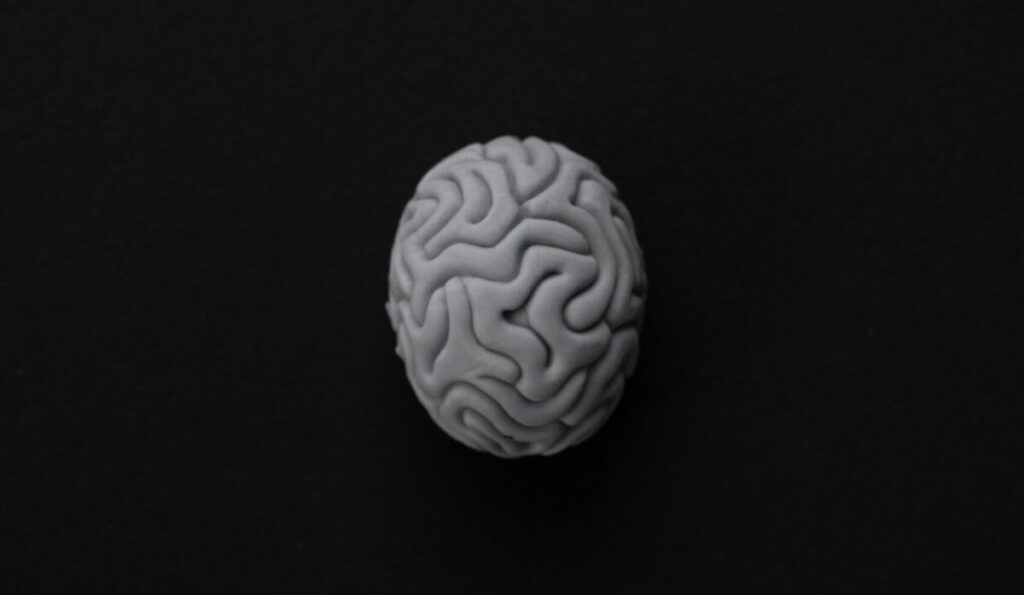How to Stop a Panic Attack
Panic attacks can be scary. Try these expert coping strategies when you sense that nauseating, sudden feeling of acute and disabling anxiety encroach.
DON’T PANIC!!! That’s a phrase we hear countless times in a day. We hear it in conversation, on TV, in the movies. We say it to ourselves. Why? Because when we panic—experience an intense sensation of fear or anxiety in response to an actual danger—we are more likely to lose control and react to potentially unsafe even life-threatening events in a frantic or irrational way. Panic inhibits our ability to reason clearly or logically. Think about the explosion of fear, the borderline hysteria you felt the day you momentarily lost sight of your six-year-old in the mall. Or the time your car skidded violently on a rain-soaked road. Even before you registered what was happening, your body released adrenaline, cortisol, and other hormones that signal danger. Those hormones cause physical reactions: heart-pounding, shallow breathing, sweating and shivering, shaking, and other unpleasant physical sensations.
At some point in our lives, most of us will experience a panic attack in response to an actual danger or acute stress. But when panic attacks occur or recur for no reason and in the absence of danger or extreme stress, or when the fear of experiencing another attack is so strong that you change your behavior by avoiding certain places or people, you may have panic disorder.
What a Panic Attack Feels Like
The End of Everything: What a Panic Attack Feels Like
Only 16, Caroline, had her first panic attack a year ago. Her mother was dropping her off at her summer job at a local school when, without warning, a full-blown panic attack engulfed her. “My heart started racing and my body felt so hot. I started to sweat and shake uncontrollably. My vision became distorted and my body felt limp, like a wet noodle,” she says. For 20 minutes, until the panic attacked passed, Caroline refused to get out of the car. Her mother didn’t know what to do.
Kirstie Craine Ruiz, 46, has lived with anxiety, panic attacks, and panic disorder for about ten years. For a long time, she had full-blown attacks 2-3 nights a week. “I would usually awake to a racing heart or the feeling of my heart expanding in my chest…as it might explode…From there, I would begin to panic and my heart would go even faster…and my body would shake so hard that it felt like I was having a convulsion. I could barely breathe and was usually pretty sure I was having a heart attack and that I was going to die. Sometimes I’d go the ER and they’d hold me overnight because my heart would be going so fast and they couldn’t get it to go down.”
During the day if she was out, the attack felt “like my head suddenly weighed a thousand pounds and my chest would get really heavy. It literally felt like something was pulling me down. I would usually have to head home immediately. I would then experience foggy vision where it…actually looked like there was fog in the air. I also experienced double vision and parts of my body—like my neck or one arm or one entire side of my face—would go totally numb.”
In addition to the emotional turmoil and the physical manifestations that Caroline and Kirstie describe panic attacks can cause palpitations, pounding heart or accelerated heart rate; sweating; trembling or shaking; sensations of shortness of breath or smothering; feelings of choking; chest pain or discomfort; nausea or abdominal distress; feeling dizzy, unsteady, light-headed or faint; chills or overheating; numbness or tingling; feelings of unreality (derealization) or being detached from oneself (depersonalization); fear of losing control or “going crazy”; and fear of dying.
Isolated attacks are bad enough. But when the attacks recur in a short period of time or when the fear of another attack is so strong that you begin to avoid situations, places, and people that may trigger an attack, you may be diagnosed with panic disorder.
Stopping Panic
Stopping Panic: What to Do When You’re Having a Panic Attack
Here, some strategies that have worked for others that may help you:
- Just breath, deeply.Relaxing your body can help sidestep a panic attack. Practice breathing in through your nose for a count of five, hold it for five, and then breathe out through your mouth for a count of five. Or take a class in meditation and breathing techniques.
- Count backward. If you suddenly feel your heart pounding or experience other physical clues that a panic attack is barreling for you, try this distraction suggested by Rob Cole, LHMC, clinical director of mental health services at Banyan Treatment Centers. Start counting backward from 100 by 3s. The act of counting at random intervals helps you to focus and override the anxious thoughts that are trying to sneak into your psyche. Better still keep loose change in your pocket. Add a dime to a nickel, then add two pennies, and so on. By controlling your thoughts and focusing on something outside yourself you will being to feel calmer.
- Get grounded.Grounding yourself is another helpful technique. Tune yourself into 4 things around you that you can see, 3 things you can touch, 2 that you smell and 1 you can taste. Again, forcing your mind to consider something outside yourself helps, says Cole.
- Ice, Ice Baby.For nighttime panic attacks, Kirstie Craine Ruiz keeps about 4 ready-to-go ice packs—2 big and 2 small– in her freezer. When she feels panic coming, she puts two small ones in her hand and the 2 large ones on my lower back. “If your heart is really racing and your breathing is bad, I would suggest taking the one on your belly and rubbing it from the middle of your chest down to the bottom of your belly, slowly, and over and over until your heart rate starts to mellow (over your shirt, of course- you don’t want to make yourself freezing!). I feel like when I do this, it literally moves the hyper energy down from my chest and alleviates any chest pain. This method always helps me when it feels like my heart is in my throat. Once you feel as though you can breathe again, place the packs on your lower belly or lower back, and in the palms of your hands. I don’t know if it’s pressure points but holding small smooth ice packs in both hands with palms up, does wonders for my panic, to this day.”
- Try DBT.Caroline, 16, has found dialectical behavior therapy (DBT) helpful and she’s discovered that her panic attacks may be heightened if not triggered by bright light. Her tip: wear sunglasses. She also shies away from conversation during the attack. “Don’t ask me if I’m OK,” she says.
Who Gets Attacks?
Who Gets Panic Attacks?
At least 6 million Americans suffer from panic attacks and panic disorder both conditions classified as anxiety disorders. According to the Anxiety and Depression Association of America (ADAA), about 2-3% of Americans experience panic disorder in a given year and it is twice as common in women as in men. Panic disorder typically affects individuals when they’re in their 20s but is also seen in young children, adolescents, and older adults.
Panic Disorder Causes
What Causes Panic Disorder?
While the exact causes are not known, what researchers do know is that panic disorder does sometimes run in families. And it is often seen in individuals who suffer from other anxiety disorders explains Cole.
For example, a person with obsessive-compulsive disorder may experience a panic attack when their schedule or compulsions are interrupted. Individuals who struggle with specific phobias are also susceptible to panic attacks. A person with an extreme fear of heights (acrophobia) may experience a panic attack in a penthouse apartment.
And for someone with generalized anxiety disorder (GAD), a condition characterized by extreme fear or worry, the unending anxiety can escalate to a panic attack. People with post-traumatic stress disorder (PTSD) have a higher incidence of panic disorder than the general population. Illness or traumatic events increase the chances of panic attacks.
People with hyperthyroidism (Graves’ disease), mitral valve prolapse, and other conditions or diseases also may be more easily triggered.
Treatment Options
Panic Disorder Treatment Options
Panic attacks and panic disorders are treatable once the underlying cause is identified. “Usually medical conditions and other factors (substance use or withdrawal from substances) are ruled out before making the diagnosis,” says Flo Leighton, psychiatric nurse practitioner, and therapist with Union Square Practice in Manhattan. Getting to the root cause typically takes a couple of sessions, says Leighton. Here are some options that may be recommended to you :
- Cognitive behavioral therapy (CBT), is based on the idea that our thoughts cause our feelings and behaviors, not external things, like people, situations, and events. The National Association of Cognitive-Behavioral Therapists says the benefit of this therapy is that we can change the way we think to feel and act better even if the situation does not change. CBT focuses on determining the thought and behavior patterns responsible for sustaining or causing panic attacks. CBT is a time-limited process (treatment goals—and the number of sessions expected to achieve them—are established at the start) that employs a variety of cognitive and behavioral techniques to affect change.
- Dialectical Behavior Therapy (DBT)is a form of cognitive therapy that emphasizes individual psychotherapy as well as group skills training to help people learns new skills and strategies—including mindfulness and distress tolerance– to manage their anxiety and panic. According to the American Psychological Association therapists who practicing DBT aim to strike a balance between validation and change by clearly communicating acceptance of who the client is and the challenges the client faces, while at the same time helping the client to learn new skills to improve emotion regulation, interpersonal communication skills and how to participate in life and cope with problems without defaulting to impulsive behavior.
- Exposure therapy and/or EMDRhave been around for a long time. These techniques involve exposing the patient in a safe and controlled environment to physical sensations they experience during a panic attack much the same way you‘d expose in small increments a person with a fear of trains or puppies or snakes to the things that scares them. With panic disorder, there’s often a heightened sensitivity to ordinary physical sensations such as racing heart, stomach ache, or feeling faint. In exposure therapy, the therapist will ask you to mimic activities—like running around or doing jumping jacks, or holding your breath—to cause panic symptoms. The idea is that by repeating the things that may trigger a panic attack those triggers will eventually lose their power.
- Medicationcan be used to control or lessen symptoms related to panic disorder. It is most effective when combined with other treatments, such as the aforementioned cognitive behavioral therapy and exposure therapy. Medications used to treat panic attacks and panic disorder include antidepressants, though they take several weeks to reach effectiveness. Benzodiazepines such as Ativan and Xanax work quickly. However they are addictive and should only be used for a short time,
Overall, the best treatment involves a combination of therapies along with mindfulness, learning deep breathing techniques, yoga and exercise.
Of course, everyone is different and what works for one person might not work for you. If you experience panic attacks or acute anxiety and if you’ve discovered helpful tips, tricks, and methods that help, let us know.


